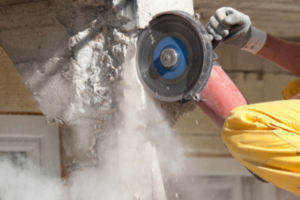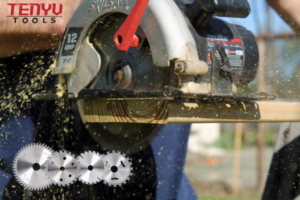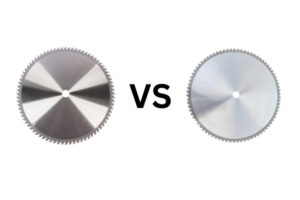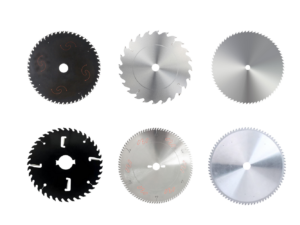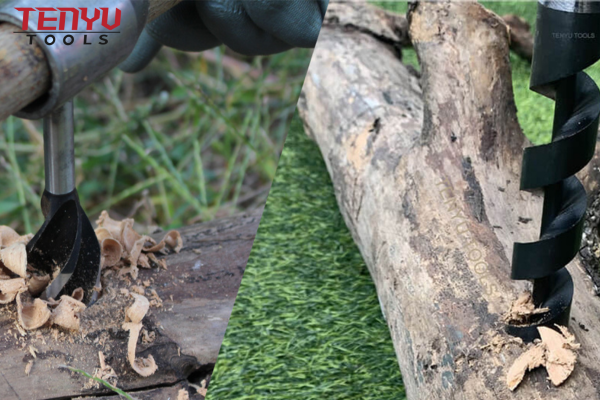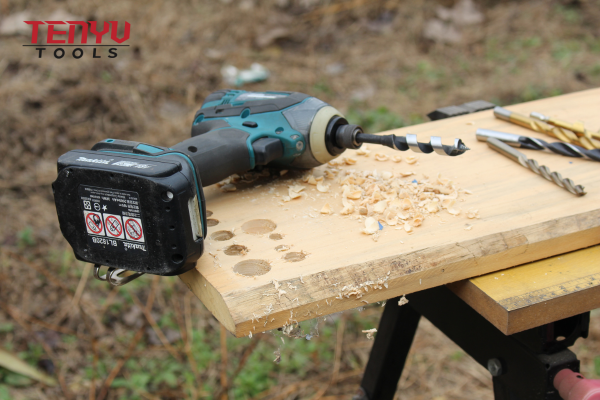
Drilling wood can be tricky. Splintered edges and overheated bits are common frustrations.
Auger drill bits are highly effective for woodworking due to their design, which minimizes splitting and ensures clean holes. They are a top choice for many woodworkers aiming for precision and durability.
Keep reading to discover how auger drill bits compare to other types and why they might be the best fit for your projects.
How to Prevent Wood from Splitting When Drilling a Hole in It?
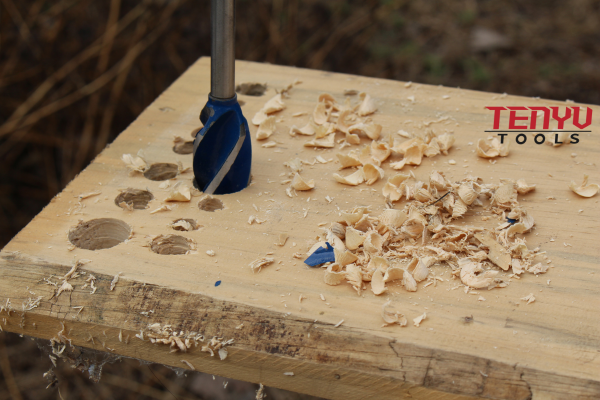
Splitting wood can ruin your project. Knowing how to prevent it is essential for every woodworker.
To prevent wood from splitting, use sharp bits, drill slowly, and support the wood properly. These simple steps ensure clean, accurate holes without damage.
Let's explore effective techniques to keep your wood intact while drilling.
Techniques to Prevent Wood Splitting
Preventing wood from splitting starts 1with selecting the right tools and preparing your workpiece correctly.
Use Sharp Drill Bits
Dull bits can tear the wood fibers, causing splits. Always keep your drill bits sharp, especially auger bits with carbide tips, which maintain their sharpness longer and provide cleaner cuts.
Drill Slowly
Drilling too quickly generates excess heat and pressure, leading to splits. A slow and steady pace allows the bit to cut smoothly without overwhelming the wood.
Support the Wood
Backing the wood with a sacrificial piece prevents the wood from moving or flexing during drilling. Clamping the wood securely also reduces the risk of splitting.
Choosing the Right Drill Bit
The type of drill bit you use plays a significant role in preventing splits. Auger bits, especially those with carbide tips, are excellent for woodworking due to their aggressive cutting and minimal friction.
| Drill Bit Type | Advantages | Disadvantages |
|---|---|---|
| Auger Bits | Clean holes, minimal splitting | Requires more space to maneuver |
| Brad Point | Precise, reduces wandering | Not as fast as auger bits |
| Spade Bits | Fast drilling, wide holes | Can cause more splintering |
By selecting the appropriate bit and following these techniques, you can achieve flawless drilling results every time.
Why Does the Drill Bit Get Hot When Drilling into Wood?
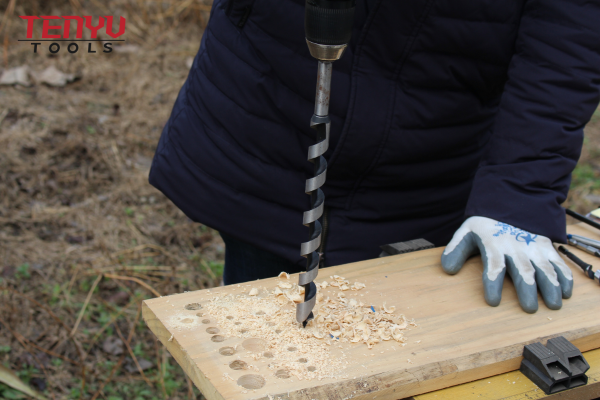
Hot drill bits can affect your work. Understanding why they heat up helps prevent damage.
Drill bits heat up due to friction and pressure during drilling, which can wear out the bit and affect the wood. Managing these factors ensures longer-lasting tools and better results.
Let's delve into the causes and solutions for overheating drill bits in woodworking.
Causes of Drill Bit Heating
Several factors contribute to the heating of drill bits when working with wood:
Friction
As the drill bit rotates, friction between the bit and the wood2 generates heat. Higher speeds and pressure increase this friction, leading to overheating.
Dull Bits
Dull bits require more force to cut through wood, increasing friction and heat. Regularly sharpening your bits, especially carbide tip auger bits, reduces this issue.
Inadequate Cooling
Lack of proper cooling or lubrication can cause heat to build up. Using lubricants or drilling at lower speeds helps dissipate heat effectively.
Managing Drill Bit Temperature
To keep your drill bits cool and efficient, consider these strategies:
Use Carbide Tip Drill Bits
Carbide tip drill bits are more resistant to heat and maintain their sharpness longer. They reduce the need for excessive pressure, minimizing heat buildup.
Drill at Lower Speeds
Slowing down your drilling speed decreases friction and heat generation. It also allows for more control and cleaner holes.
Take Breaks
Allowing the drill bit to cool between drilling sessions prevents overheating. This practice extends the life of your bits and maintains their performance.
Benefits of Managing Heat
Proper heat management leads to several benefits:
- Extended Bit Life: Cooler bits last longer and retain their cutting efficiency.
- Better Wood Quality: Reduced heat prevents burning and ensures cleaner holes.
- Safety: Lower temperatures reduce the risk of accidents caused by overheated tools.
By understanding and controlling the factors that cause drill bits to heat up, you can enhance your woodworking projects and maintain your tools in optimal condition.
What is An Auger and How Do You Use It to Dig Holes?
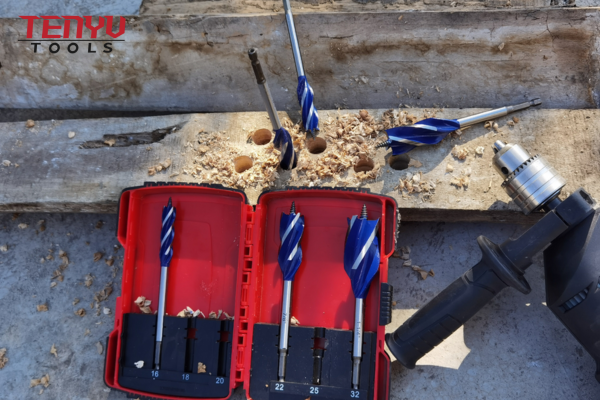
Digging holes by hand is time-consuming. An auger can make the process faster and easier.
An auger is a specialized drill bit designed for creating deep, clean holes in wood. It features a helical screw blade that removes wood efficiently, making it ideal for various woodworking tasks.
Let's explore what augers are and how to use them effectively in your projects.
Understanding Auger Drill Bits
Auger drill bits are designed with a sharp, screw-like blade that digs into wood, pulling the bit forward while removing debris. This design allows for deeper and cleaner holes compared to standard bits.
Features of Auger Bits
- Carbide Tips3: Enhance durability and cutting efficiency.
- Wide Flutes: Facilitate better debris removal.
- Pointed Tips: Ensure precise starting points and reduce wandering.
Using an Auger Drill Bit
To use an auger drill bit effectively, follow these steps:
- Choose the Right Bit: Select a carbide tip auger bit suitable for your wood type and hole size.
- Mark the Spot: Clearly mark where you want to drill to ensure accuracy.
- Secure the Wood: Clamp the wood to prevent movement during drilling.
- Start Drilling: Begin at a slow speed, applying steady pressure to allow the bit to penetrate the wood.
- Remove Debris: Periodically pull the bit out to clear wood shavings and prevent clogging.
- Finish the Hole: Continue drilling until you reach the desired depth, then retract the bit slowly.
Advantages of Using an Auger
Auger bits offer several benefits for woodworking:
- Efficiency: Faster drilling compared to standard bits.
- Clean Holes: Minimal splintering and precise cuts.
- Versatility: Suitable for various wood types and hole sizes.
Maintenance Tips
To ensure your auger bits perform optimally:
- Keep Them Sharp: Regularly sharpen carbide tips to maintain cutting efficiency.
- Clean After Use: Remove any wood residue to prevent corrosion.
- Store Properly: Protect bits from moisture and physical damage by storing them in a dry, secure place.
Using an auger drill bit with carbide tips can significantly improve your woodworking experience, providing clean and accurate holes with less effort.
What Are The Best Bits for Drilling in Wood?
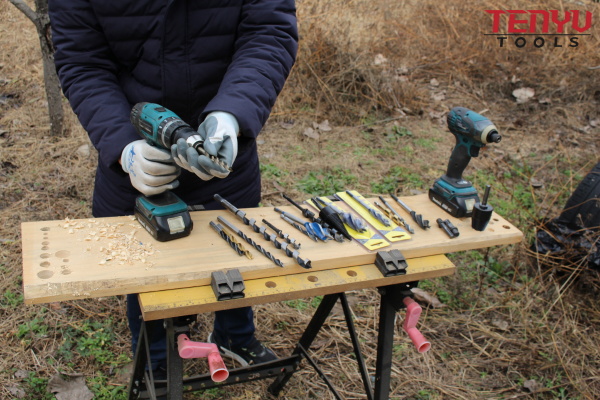
Choosing the right drill bit is crucial. The best bits make your woodworking smoother and more precise.
Carbide tip drill bits, especially auger bits, are among the best for drilling in wood due to their durability and clean cutting ability. They outperform standard bits in both quality and longevity.
Let's examine the top drill bits for woodworking and why carbide tip auger bits stand out.
Top Drill Bits for Woodworking
Several types of drill bits are commonly used in woodworking, each with its own advantages:
Auger Drill Bits
Auger bits are ideal for deep, clean holes. Their helical design and carbide tips ensure efficient cutting and minimal splintering.
Brad Point Bits
Brad point bits have a sharp center point that keeps the bit steady while drilling. They are perfect for precise, shallow holes4 and are less likely to wander.
Spade Bits
Spade bits are flat and wide, making them suitable for fast drilling of large holes. However, they can cause more splintering compared to auger and brad point bits.
Forstner Bits
Forstner bits create smooth, flat-bottomed holes. They are excellent for finish woodworking where clean edges are essential.
Why Carbide Tip Auger Bits Excel
Carbide tip auger bits combine the advantages of auger design with the durability of carbide:
- Sharpness: Carbide tips stay sharp longer, reducing the need for frequent sharpening.
- Durability: Resistant to wear and tear, they handle tough wood types with ease.
- Clean Cuts: Provide precise and splinter-free holes, enhancing the overall quality of your projects.
Comparing Drill Bit Performance
| Drill Bit Type | Durability | Precision | Speed | Best For |
|---|---|---|---|---|
| Auger Bits | High (with carbide) | High | Moderate | Deep, clean holes |
| Brad Point Bits | Moderate | Very High | Slow to Moderate | Precise, shallow holes |
| Spade Bits | Low to Moderate | Low to Moderate | High | Fast drilling of large holes |
| Forstner Bits | Moderate | High | Slow | Smooth, flat-bottomed holes |
Choosing the Right Bit for Your Project
Selecting the best drill bit depends on your specific needs:
- For Deep Holes: Choose carbide tip auger bits for their efficiency and clean cuts.
- For Precision: Brad point bits offer superior control and accuracy.
- For Large Holes: Spade bits provide speed but may sacrifice some finish quality.
- For Flat Bottoms: Forstner bits are ideal for detailed woodworking tasks.
Maintenance and Care
To maximize the lifespan of your drill bits:
- Regular Cleaning: Remove wood shavings and debris after each use.
- Proper Storage: Keep bits dry and protected from damage.
- Sharpening: Maintain sharpness, especially for carbide tips, to ensure optimal performance.
Investing in high-quality carbide tip auger bits can enhance your woodworking projects, providing reliable and precise drilling every time.
Conclusion
Choosing the right drill bits, especially carbide tip auger bits, can transform your woodworking projects with precision and durability.
-
his link will provide detailed information on the types of tools that can help prevent wood splitting. ↩
-
"Wood" is a relevant term in understanding how different types of wood may impact drilling performance. ↩
-
Carbide tips are commonly used in cutting tools to enhance their durability and cutting efficiency. ↩
-
"precise, shallow holes" is closely related to the specific use case of Brad point bits. ↩

